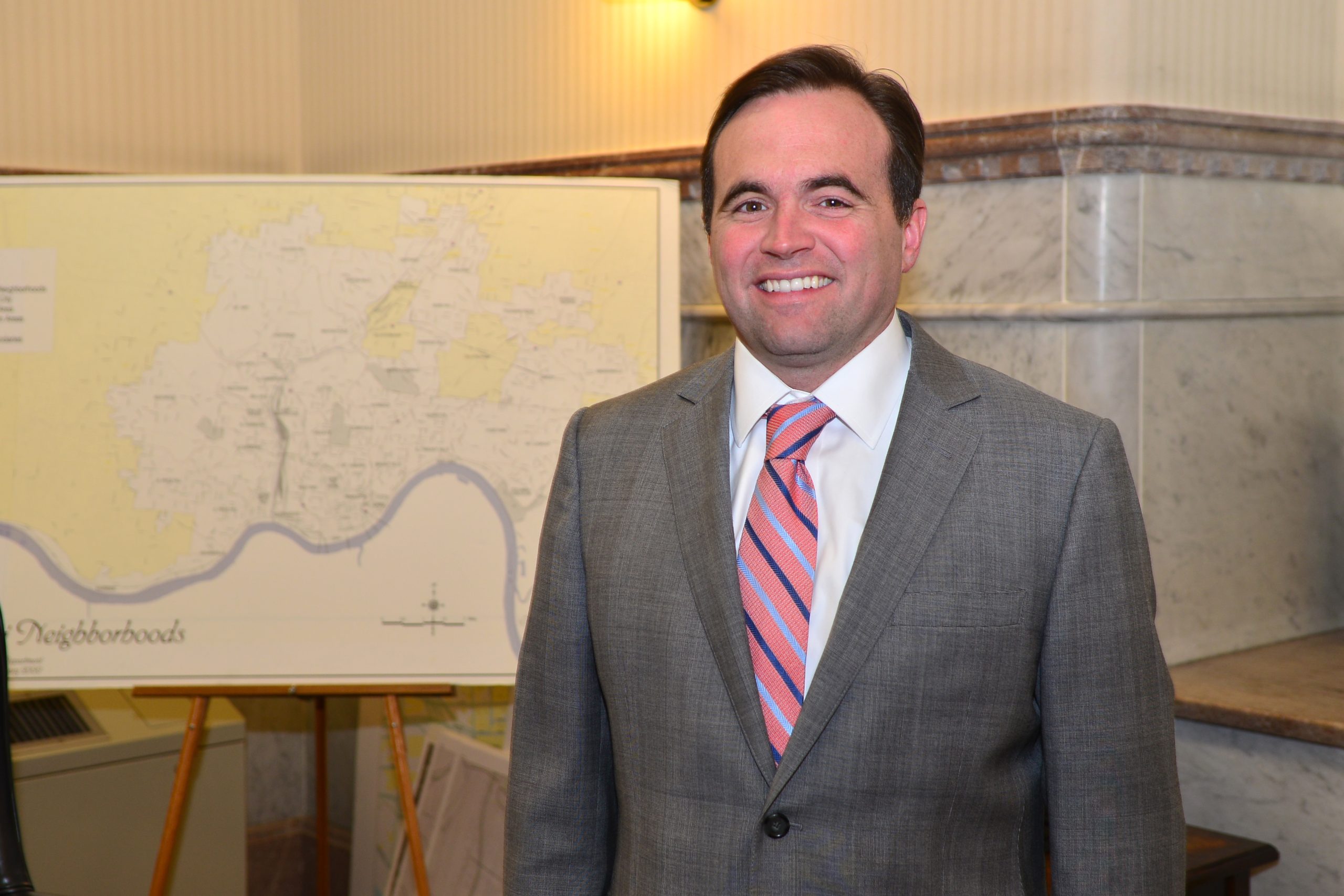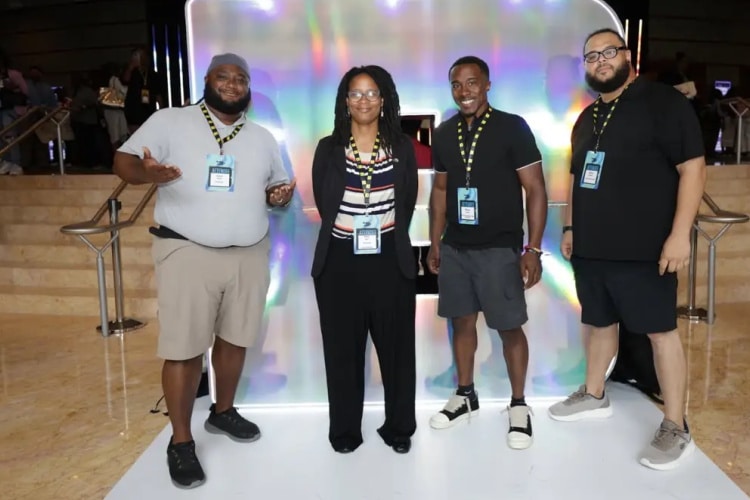Community leaders push to make Cincinnati the most immigrant-friendly city in America
Cincinnati ranks as one of the best cities to raise a family, to start or expand a business, and (no surprise) to eat ice cream. Now a group of nearly 100 prominent Cincinnatians led by Mayor Cranley wants to add one more designation to that list—The Most Immigrant Friendly City in America.
Alfonso Cornejo moved to Cincinnati from Mexico 26 years ago as a Procter & Gamble employee. Although he was bilingual, his accent elicited demands that he “speak American” when he requested assistance in local shops. Since then, he has seen Cincinnati evolve, but he challenges local residents to step a bit further out of their comfort zones.
“Whether someone comes from India or Indianapolis, we want to keep them here,” he says, “but we treat I-75 like the Berlin Wall, and the Ohio River is the Ohio Ocean,” Cornejo says. “If we are not opening our arms to the east side or the west side or northern Kentucky, how are we going to open our hearts to someone from Kuala Lumpur or Thailand?”
Although various groups have worked for years to pave the way for immigrants, most recently, Cincinnati Mayor John Cranley has taken up the charge, inviting 92 community leaders to join his Taskforce on Immigration. The Taskforce will focus on five areas: economic development, community resources & welcoming, education & talent retention, rights & safety, and international attractiveness.
In January 2015, members of the Taskforce, including University of Cincinnati President Santa Ono and Cincinnati USA Regional Chamber of Commerce CEO Brian Carley, will present the mayor with a full list of recommendations for attracting more foreign-born residents.
Why should Cincinnati attract more immigrants?
Mayor Cranley says that welcoming more immigrants to Cincinnati makes the region more competitive. It draws new sources of capital, innovation and cultural richness to the city, which in turn attracts more residents and businesses. For example, nearby Dayton’s immigrant population is now on the upswing thanks to immigration reform efforts led by of Dayton City Manager Tim Riordan. Welcome Dayton, an initiative passed in 2011, called for policy changes and better communication to attract and retain foreign-born residents.
State Representative Wes Retherford (R-Hamilton) agrees, but with a caveat. “If we are bringing well-educated, hardworking, legal immigrants, that is always going to benefit any community,” Retherford says. However, he worries that the mayor’s plan includes attracting illegal immigrants, which he says creates a burden on law enforcement and drains resources from tax-payers.
“We are promoting legal immigration,” Cranley says. “I want Cincinnati to succeed. Cities that have seen the most economic growth over the last 30 years are cities with immigrant communities that have thrived. Growing our economy is good for people who are seeking the American dream as well as for people who are already here.”
Creating more opportunity for international residents is an issue that hits close to home for Cranley, whose wife’s family emigrated from Jordon before starting Gold Star Chili—a company that now employs hundreds of Cincinnatians. Along with Gold Star, several other local corporations were started by immigrants or first-generation Americans, including Procter & Gamble, Kroger and Graeter’s.
University of Cincinnati President Santa Ono wants local residents to know that a larger immigrant population will have a positive impact on their quality of life. “A bustling, diverse community is typically more affluent and has more cultural offerings available that make it a fun place to live,” he says.
Currently, immigrants make up only 4.6 percent of the city’s population—less than all other major cities in our region, according to the 2013 U.S. Census. This is a troubling statistic, considering that immigrants are responsible for 25 percent of the total new business creation and related job growth.
Additionally, according to Mary Stagamen, executive director of Agenda 360, becoming more immigrant friendly could help Cincinnati retain and attract more Fortune 500 companies like GE and Procter & Gamble that seek international candidates to fill positions in science and technology—areas where the U.S. lags behind, ranking 52nd globally. “I would love to see us produce more engineers and physicians and the like,” says Stagaman, “but in the meantime there’s a pool of ready (international) labor available to us. … We’re turning them out every year at the University of Cincinnati, but we’re not keeping them here.”
How can Cincinnati meet the challenge?
“I’d like to see UC take a lead role in making the mayor’s vision a reality, creating a real magnet for talent acquisition,” UC’s Ono says. “Talent is a global commodity.”
He suggests that one key to making the city more immigrant friendly is helping people navigate the system. “It is not a straightforward process to become a landed immigrant/resident. I can say that first-hand,” says Ono, who was born and raised in Canada.
The Chamber’s Brian Carley suggests that another way Cincinnati can attract more immigrants is by promoting itself more effectively—especially emphasizing its nine Fortune 500 companies and thriving arts and education sectors. “There are things that people don’t think we are doing well that we actually are doing well,” Carley says. “Things that Agenda 360 is doing, the progress the airport is making in getting additional international flights, things that REDI and our economic development initiatives are doing. Now there’s still progress to be made, and that’s why we have the Taskforce.”
“Once people get here and see the opportunities that exist, they fall in love with us,” Stagaman adds. “Because we’re lovable!”
What does it mean to be immigrant friendly?
Cornejo suggests that every person in the region can play a role in attracting more immigrants, and thus boosting Cincinnati’s growth. “If you hear a foreign accent, ask them where they are from and offer to connect them to resources they may need. That will make our community stand out,” he says, speaking from first-hand experience. “Additionally, we need to celebrate our differences. Not just respect them—celebrate them.”
Mayor Cranley agrees: “If people see someone they haven’t met before and go out of their way to be welcoming, it could make a huge impact.”
You can find more information on how to get involved or voice your opinion on the Mayor’s Taskforce on Immigration website. Also The Cincinnati USA Regional Chamber, Agenda 360, Vision 2015 and Fifth Third Bank will host the annual Diverse by Design Leadership Symposium this Friday, Nov. 7, from 7:30-11:30 a.m. The event is open to the public and highlights the ongoing work of diversity and inclusion in Greater Cincinnati and Northern Kentucky. To register, click here.
















